When I heard that we would go to the Royal Air Force Museum, I almost jumped out of my seat. I play WWII aviation simulation games, watch documentaries, read aviation encyclopedias, and listen to podcasts on the aerial battles daily. I am so fascinated by the effect of these aerial machines; they are a complete marvel of engineering and gorgeous to the eye, while being a weapon of destruction and bloodshed.
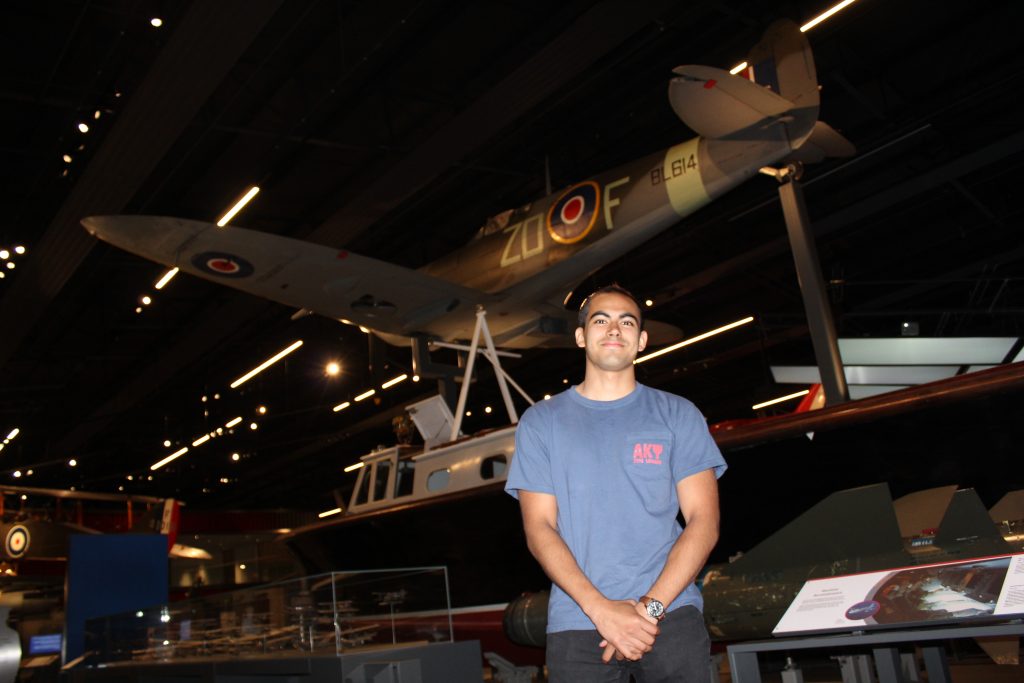
Spitfire with 20mm cannons
The first plane that caught my eye was the Spitfire with 20mm cannons. Spitfire were one of my favorite WWII planes because the elliptical wings allow for larger lift and turning mobility. The Hispano 20mm cannons were extremely deadly against the Germans due to fragmentation of the shells. Spitfires look elegant due to their rounded and smooth frame. This plane takes my #1 spot in the British aerial tree because of their ruggedness, beauty, and its lethality.
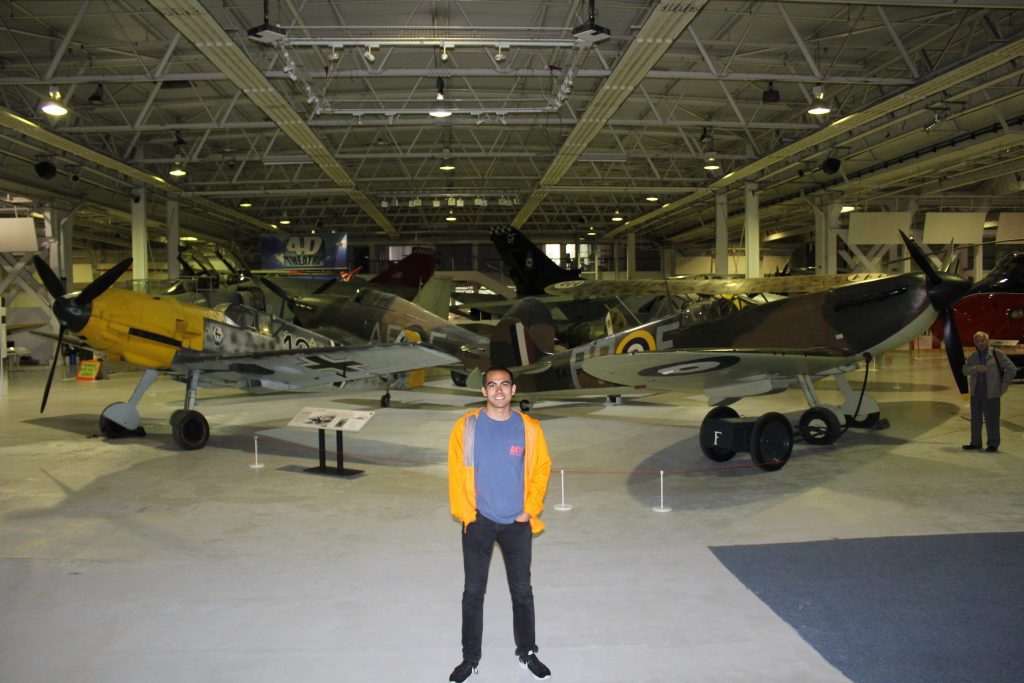
Battle of Britain Aircraft
Battle of Britain is ingrained in the people of Britain as the crucial battle that was won over the Germans. The fight for superiority was important for Britain and of its people and pushes their national narrative of stoicism and “Keep Calm and Carry On”. Below is me with in front of the German Bf-109 and the British Spitfire and Hurricane that fought during this battle. I find the juxtaposition of showing the different airplanes next in the Battle of Britain exhibit important to see how different and similar these weapons are visually.
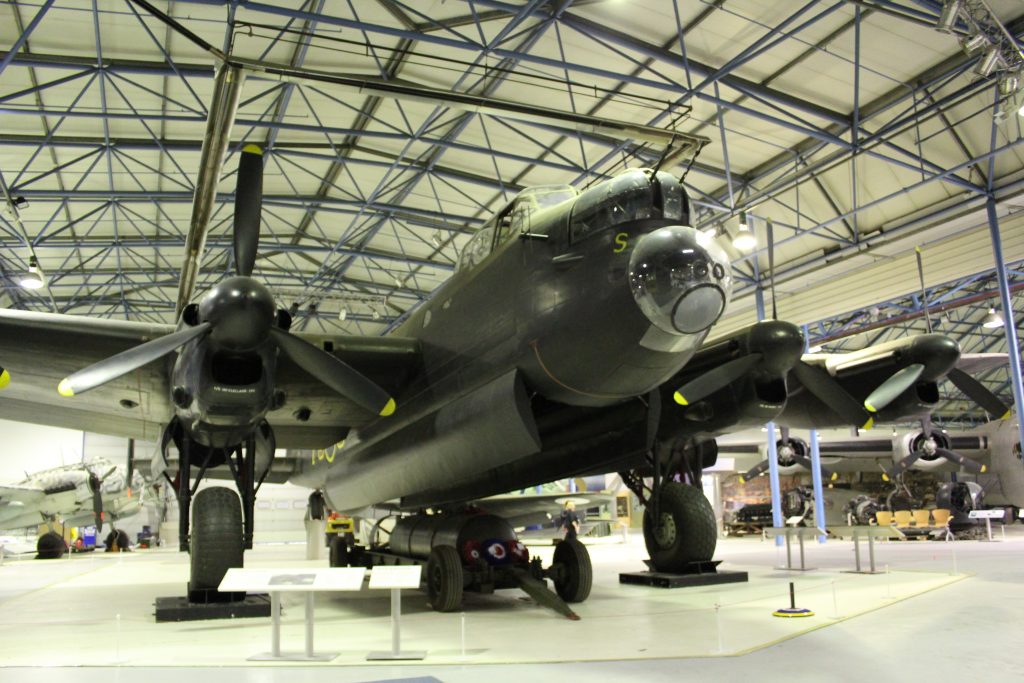
Lancaster Bomber
Above is the Lancaster Bomber for the British. This was Britain’s primary bomber for the war and I didn’t expect the sheer size of it. When I walked up and realized how big the wings were and the bomb bay was. Around the plane we saw the types of bombs that were used and I saw a 12,000lb single bomb.

Side view of the Lancaster portraying the bombing runs it has made
I was amazed by the size of the number of bombing raids it has made. On the side there is a little comedic relief while being passive aggressive towards the Germans. It makes fun of one of the German commander’s quotes.
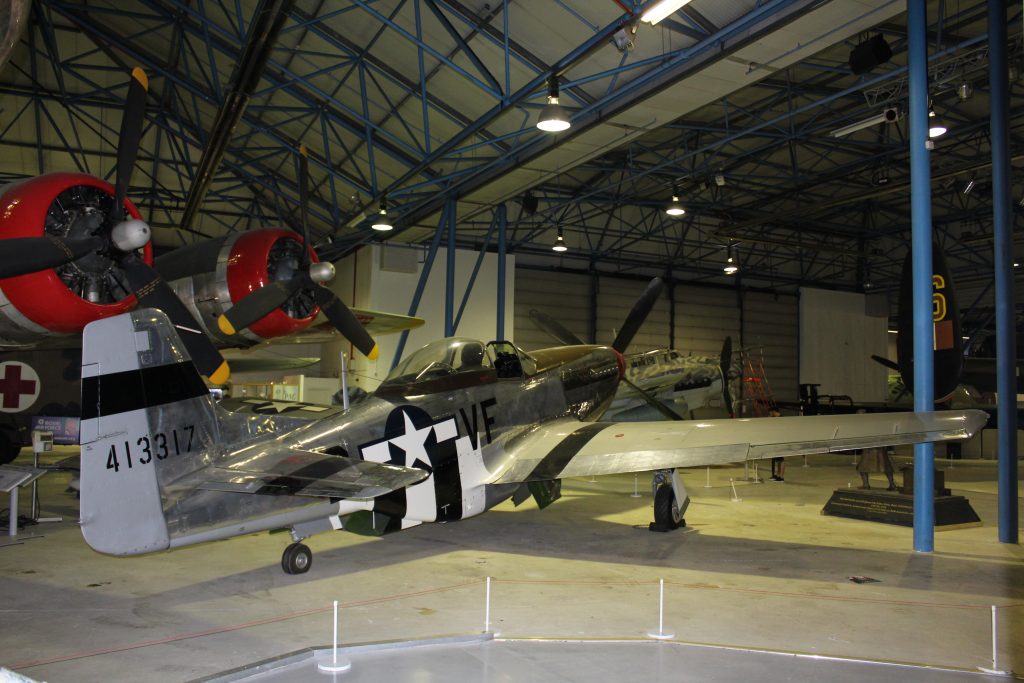
P-51 Mustang
The P-51 is one of the most iconic planes for the US from WWII. While these were mediocre planes in terms of the technology and performance, the extensive number of planes that the US built allowed them to take air superiority over the Germans. These planes usually escorted the B-17, B-24, B-25, and the B-29 bombers for bombing raids.
My favorite plane from the Americans for WWII is the P-47 Thunderbolt. This is one of the first planes to add a turbocharger, allowing it to perform better at higher altitudes. These planes were being very tough. It was able to carry a large payload, take a lot of damage, and return back to base. Below is a picture I took of the Thunderbolt.
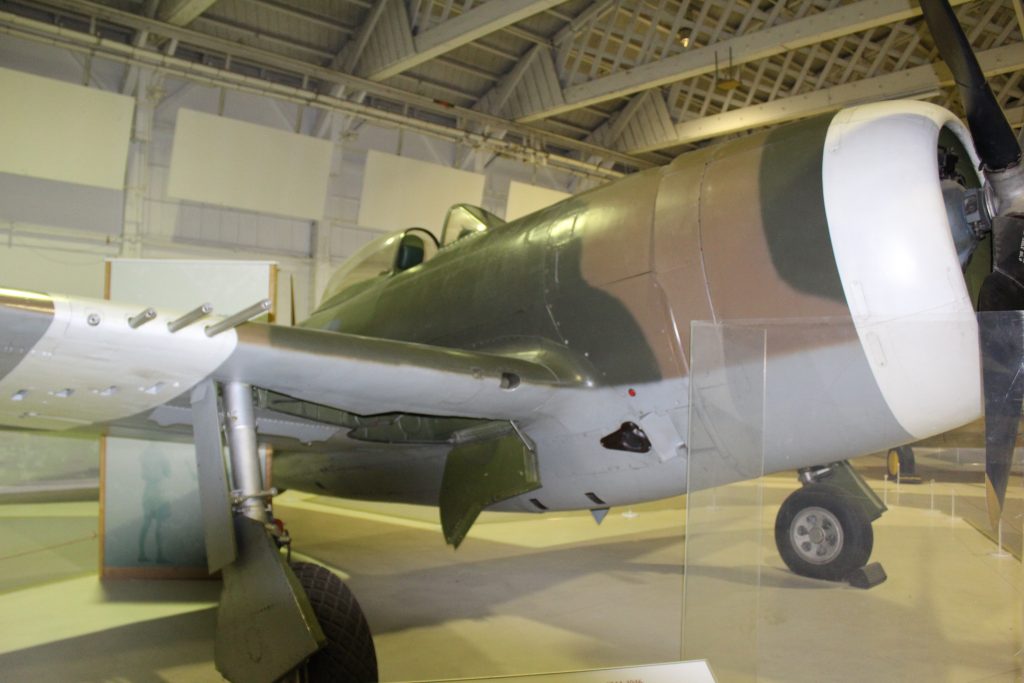
American P-47 Thunderbolt
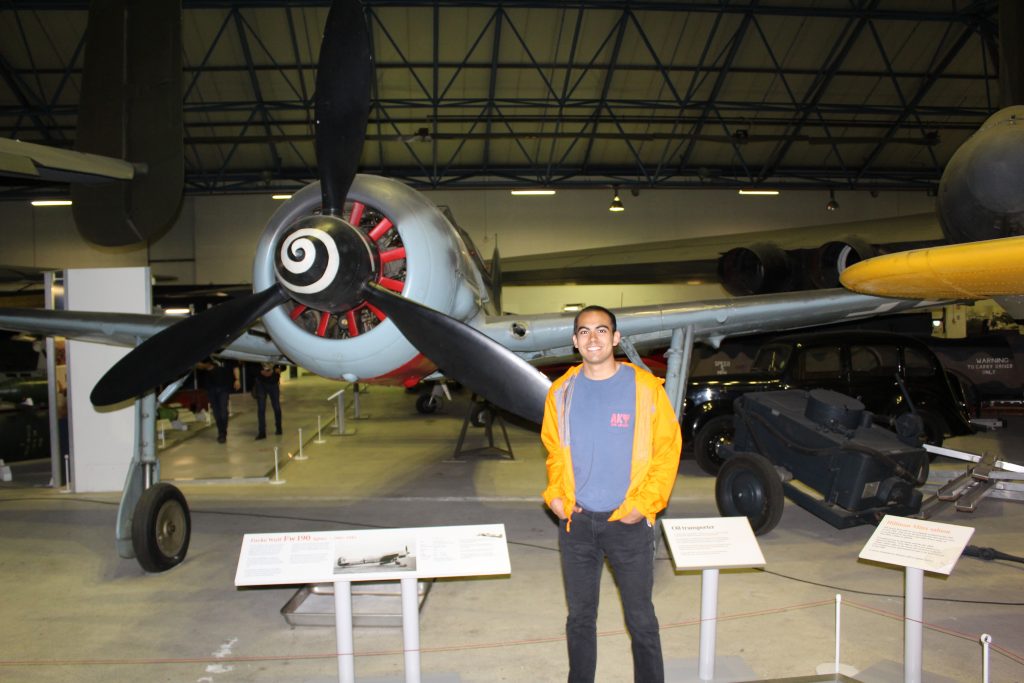
Me standing in front of a Focke Wulf 190
However, my favorite German plane is the Focke Wulf -190. My favorite variant is the D9 and D12-13, but the one below is an A5 variant but still one my favorites. This was the king of the skies; the Fw-190 would be able to boom and zoom on fighters and bombers. That means that is used energy fighting: using altitude to gain speed and pounce and use the gained speed to climb back to high altitude before the enemy plane could fire back. These planes were feared because of 2-8 20 mm cannons that could be fitted on the plane. MG 151, the 20mm cannons, shred through planes and deliver high explosive fragmentation. Fw-190 are the machines that deliver death from above as they take my #1 spot of all countries during WWII.
I was very fortunate to see the planes that read about, played games with, and learned so much about.